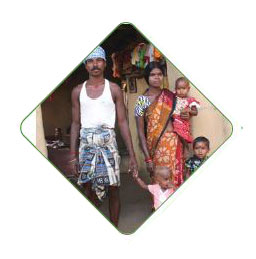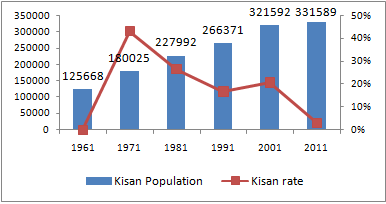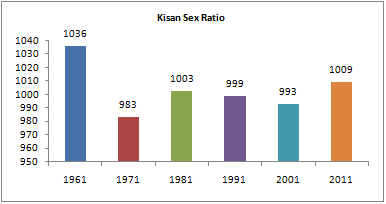A scheduled tribe of Odisha.

Location (Major) : Sundergarh, Sambalpur, Jharsuguda
Language : Kisan (Dravidian)
Major Occupation : Cultivation & Labour
Socio-cultural Features
The term ‘Kisan’ has been derived from a Hindi term which means peasant or farmer. They are migrants from Nagpur area and are considered to be an offshoot of the Oraon tribe. They bear different synonyms such as Kuda, Kora, Mirdha, Kola, Morva and Birhor. The Kissan settlements are generally uniclan and homogenous. In multiethnic villages they live in separate hamlets. Kisan family is mostly nuclear and monogamous. Few cases of extended family are also found. Family is nuclear, patrilocal and patrilineal. Kisan is an endogamous community which is divided into a number of exogamous totemic septs. Marriage through negotiation is regarded as ideal and prestigious. Bride price is prevalent and cross cousin marriage is preferred. The other modes of marriage are by capture, elopement and service. Remarriage of widows, widowers and divorcees are permitted and junior levirate and junior sororate are also socially approved. The Kisan observe birth pollution for a period of seven days. The community practises both burial and cremation for the dead. They observe death pollution for eleven days. The Kisan profess Hinduism and worship Hindu deities along with their traditional tutelary deities like Gosain, Bhim Devta, Budha Band, Baghia, Samlei, etc. Their traditional community priest Kalo or Soin officiates in the rituals and Brahmin priest worships the deities. The community has its own traditional council known as Jati Samaj headed by a Sardar or Kotwar whose office is hereditary. The other office bearers are Mukhia, the village head and Barika, the regional head. The Jati council settles intra community disputes and acts as the custodian of social values, traditions and customs.



